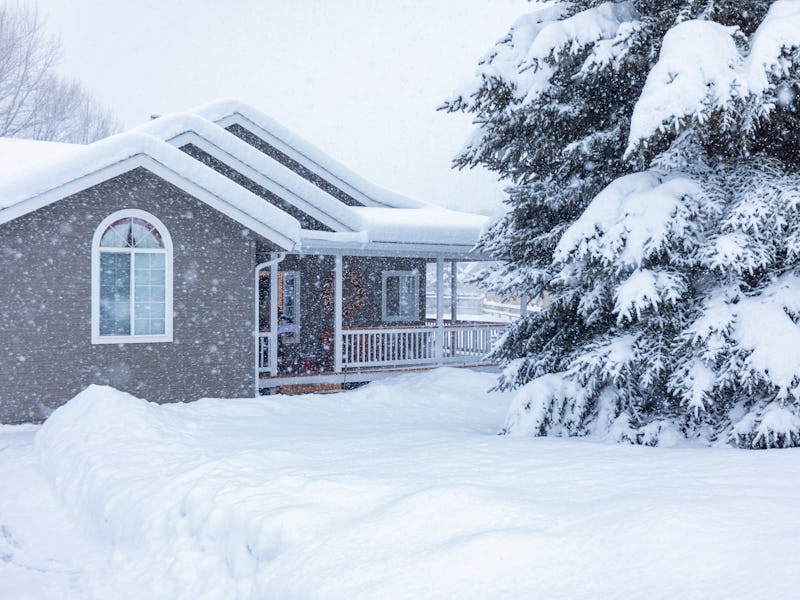Feeling cold? How your thermostat affects your mood
We followed people over many years and tracked the effect of being unable to keep your home warm on mental health.

Concerns about fuel poverty and people not being able to heat their homes adequately are not new in the U.K., but these worries have been heightened by significant increases in energy costs and the cost-of-living crisis. And as winter approaches, things are about to get a lot worse.
Despite a relatively mild climate, the U.K. has higher levels of excess winter deaths — deaths associated with cold weather — than many colder countries. This greater exposure to cold, despite milder weather, is related to poor housing quality, the high cost of heating homes, and poverty.
We know quite a lot about how living in a home you can’t keep warm enough affects your physical health. Colder temperatures suppress the immune system, for example. But we know relatively little about the effects on mental health. Our new research shows that living in a cold home is a significant mental health risk.
Cold comfort
Living in a cold home can affect your mental health in several ways. For many, heating costs are a source of stress and financial strain. Not being able to keep your home and family comfortably warm reduces feelings of control and autonomy over your environment. People who are unable to heat their homes often adopt coping mechanisms that limit socializing — for example, not inviting friends over and going to bed early to keep warm. And many people are just worn down by the drudgery of a whole winter of being uncomfortably cold.
Using data from a large representative sample of adults in the UK, we followed people over many years and tracked the effect of being unable to keep your home warm on mental health.
When people’s homes became cold, their risk of severe mental distress significantly increased. For people who previously had no mental health problems, the odds of severe mental distress doubled when they had a cold home, while for those who had some (but not severe) mental health symptoms, the risk tripled (see chart below). We found these effects even after taking into account many other factors associated with mental health, including income.
Odds of reporting severe mental distress following the transition into cold housing compared to those who remained in warm homes.
Sadly, the risk of living in a cold home differs greatly across the U.K. population. Lone parents and people who are unemployed or long-term sick are much more likely to live in cold homes. There is also significant inequality across ethnic groups — more than 12 percent of black people live in cold homes compared with under 6 percent of white British people, for example. Those who rent rather than own their home are also far more likely to live in cold homes, for social renters, this is despite the, on average, higher quality and efficiency of socially rented homes.
Putting on another jumper won’t be enough to get many in the U.K. through the coming winter. And mental health distress is just one consequence. Cold homes cause significant personal and societal costs — from individual health effects to the increased pressure on the NHS, as well as broader economic loss due to missed work. Rishi Sunak’s new government needs to help people live in adequately warm homes this winter. But how?
The older age of housing in the U.K. is heavily implicated in the U.K.’s high levels of cold. Support for energy efficiency improvements is, therefore, a possible means of reducing cold homes. This will also mean tackling the so-called “split incentive” in the private rented sector, which houses a significant proportion of households. The split incentive refers to the challenge of the benefits of improvements not experienced by the property owners but by tenants, reducing the incentive for owners to invest. This results in poorer quality and more expensive homes for renters.
Heat or eat?
The high proportion of cold homes in the social housing sector — despite having the best average energy efficiency due to insulation and building types (flats) — shows that energy efficiency improvements alone will not eliminate cold. Incomes in the U.K. are falling. Benefits are painfully low and worsened by policies including the benefit cap, two-child limit, and sanctions. Years of cuts and below inflation rises mean that the term “heat or eat”, used to describe difficult spending decisions for low-income households, is now out of date, as many can afford neither.
The combination of low household incomes with surging energy costs has created devastating pressure on household budgets. While the energy cap has limited energy cost increases below the worst estimates, energy bills have more than doubled in the past year. And prepayment meters mean that those with the least end up paying the most.
There are, therefore, many areas for potential government intervention and clear evidence that failing to intervene will cause harm to health.
This article was originally published on The Conversation by Amy Clair at the University of Essex and Emma Baker at the University of Adelaide. Read the original article here.
This article was originally published on